HPLC Columns
Home » HPLC Columns
HPLC Column Professional OEM Factory
uHPLCs is a professional HPLC (high-performance liquid chromatography) column OEM (original equipment manufacturer) factory based in China. we has been in the industry for many years and has been a leading provider of high-quality HPLC columns for various applications.
One of the strengths of uHPLCs is that we can customize HPLC Columns to meet the specific needs of customers. Whether it’s a special bonding phase, particle size, or column dimension, uHPLCs’s R&D team can work with customers to create a column that will provide optimal results for your special applications.
Conventional Reverse C8, C18 HPLC Column

USHD C18-pro HPLC Column
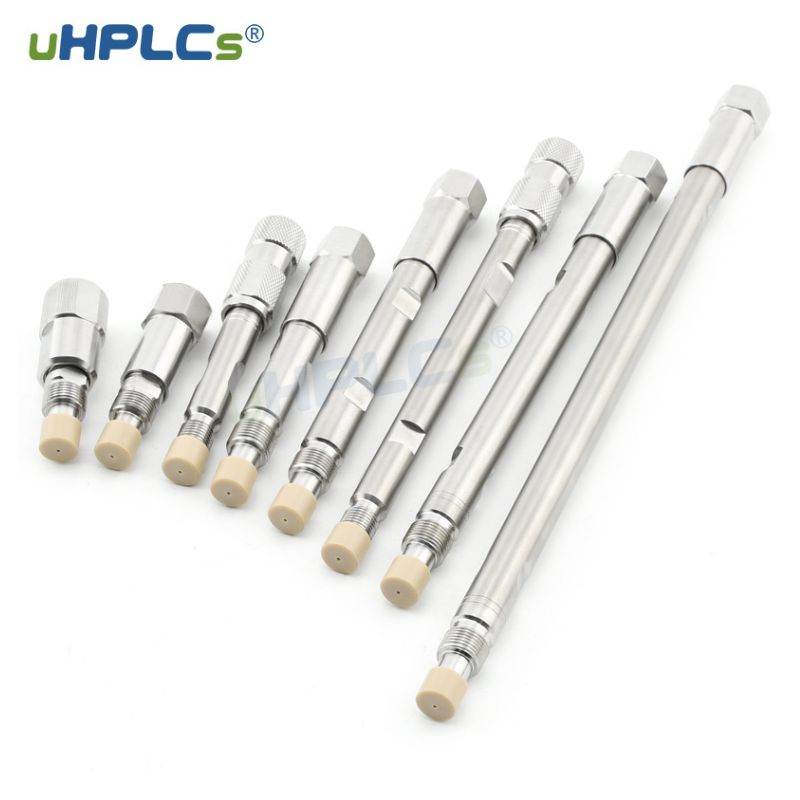
USHD C18-AQ HPLC Column

USHD C18-AR HPLC Column

USHD C18-T HPLC Column

USHD C8 HPLC Column

USHD C8-pro HPLC Column

USHD Phenyl Column

USHD PFP HPLC Column
Normal Phase HPLC Column

USHD SiO2 HPLC Column

USHD NH2 HPLC Column

USHD CN HPLC Column
Size Exclusion Chromatography Column ( SEC Column )
HPLC Columns for Detection of Macromolecule Biological Samples ( Bio-SEC )
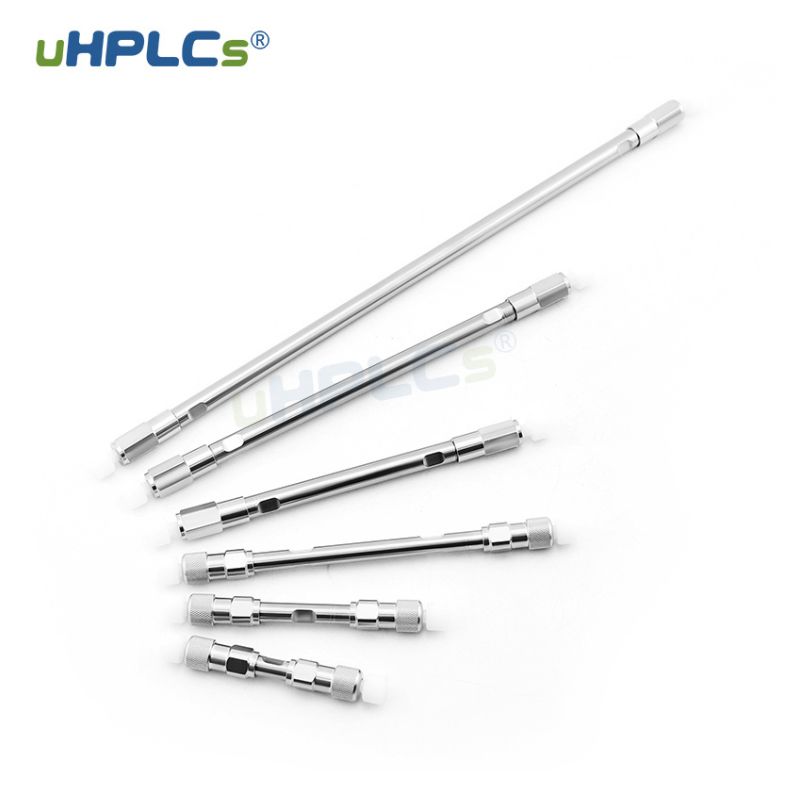
USHD SEC-Bio HPLC Column

USHD SEC-Bio-S
HPLC Column

USHD C8-Bio HPLC Column

USHD C4-Bio HPLC Column
HILIC Mode HPLC Column

USHD HILIC-SiO2 HPLC Column
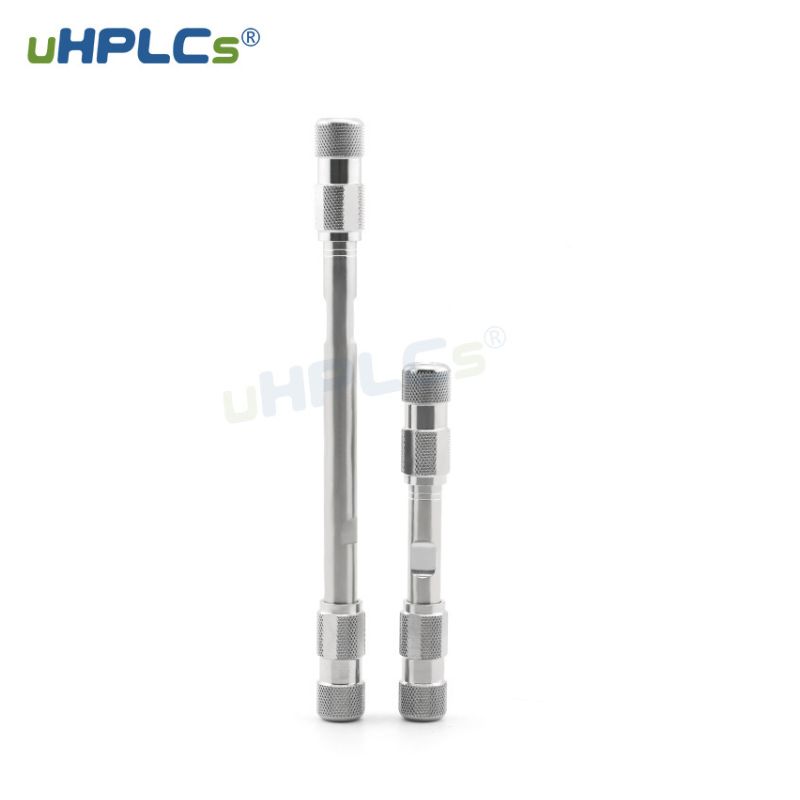
USHD HILIC-Amide HPLC Column
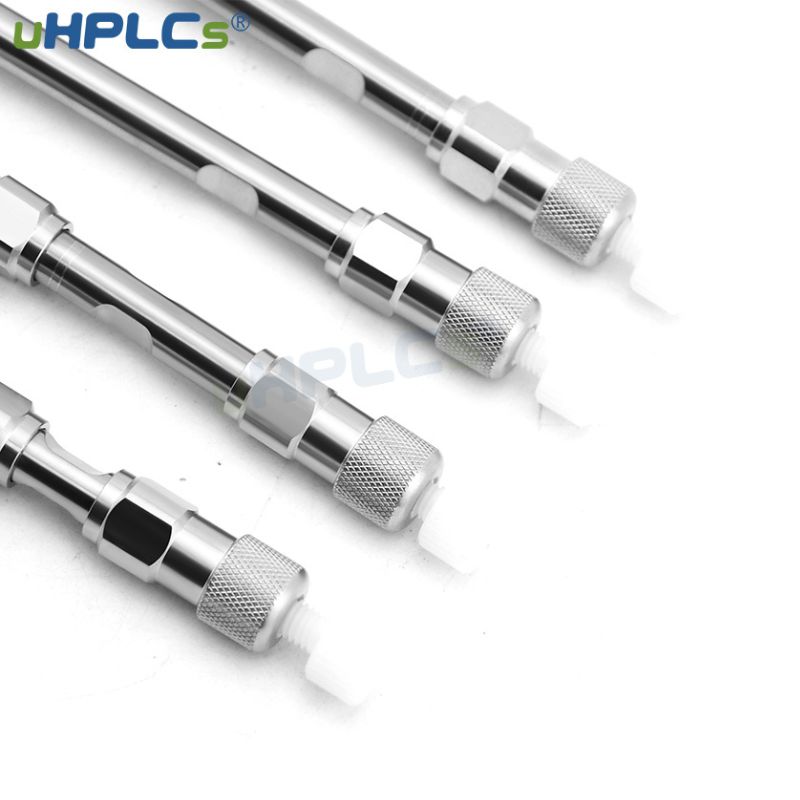
USHD HILIC-ZIL HPLC Column
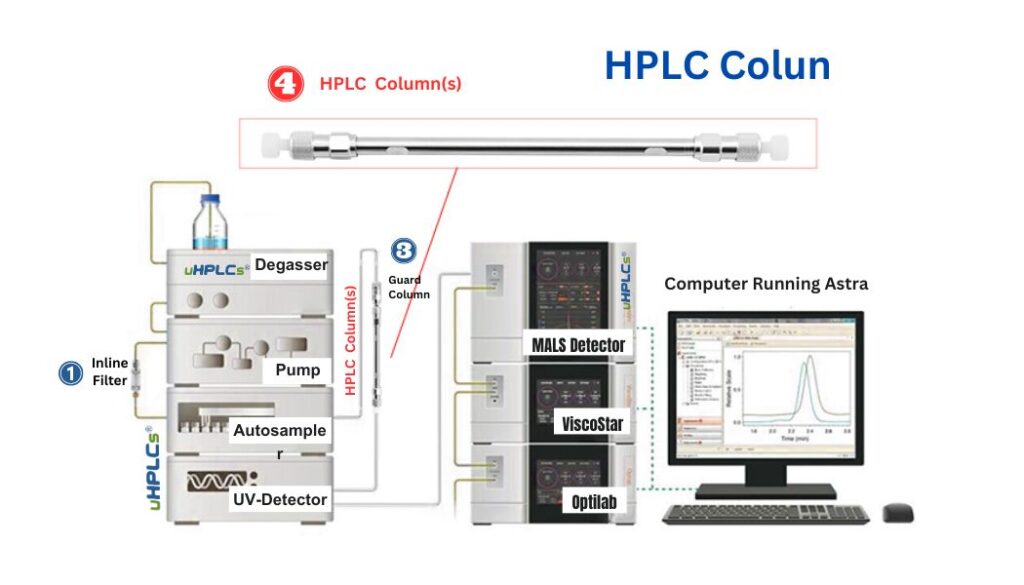
In addition to custom columns, uHPLCs also offers a wide range of standard columns for various applications such as reversed-phase, normal-phase, ion exchange, size exclusion, and HILIC. We also offers prepacked columns and accessories, such as frits, end-fittings, and Guards Columns.
uHPLCs uses state-of-the-art manufacturing techniques to produce high-quality columns that are consistent, reliable, and provide excellent performance. we have a strict quality control program to ensure that all columns meet the highest CE , SGS and UL standards for performance and reproducibility.
HPLC Column Size Option
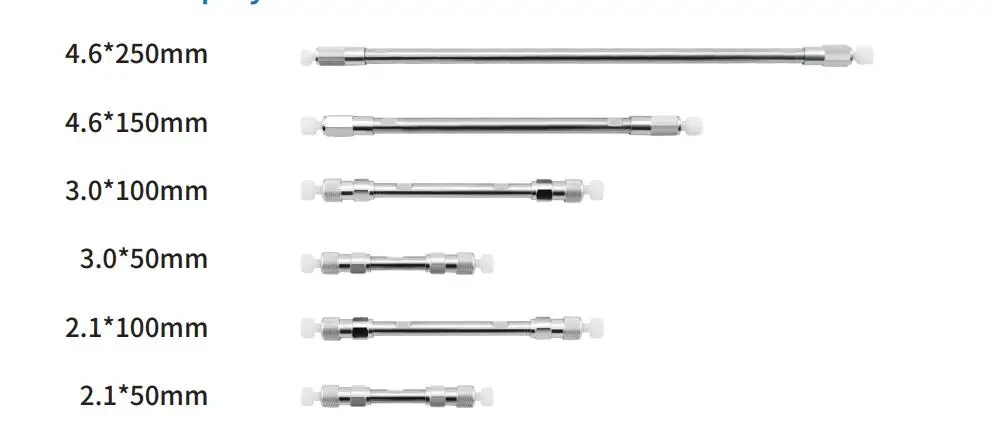
Contact Us For Excellent HPLC Columns
Experience the Precision and Reliability of Our High-Quality Columns Today
Professional HPLC Team Support
uHPLCs’s knowledgeable and experienced technical support team is always available to answer questions and guide selecting the right column for a particular application. This can ensures you will always get the best HPLC Column solution from uHPLCs.
In summary, uHPLCs is a professional and reliable HPLC column OEM factory in China and we offer high-quality products and excellent customer service. With ability of customize columns and its wide range of standard products, uHPLCs is well-suited to meet the needs of many customers in the HPLC field.

1. Hassle-Free
Before & After Servic
uHPLCs prides itself on providing excellent customer service, both before and after the sale.

2. Quality Management Test Before Mass Manufacture
Quality is a top priority. We understand that the products we manufacture will be used in critical applications, which is why we take great care to ensure that they are of the highest quality.

3. Rigorous Production Process
uHPLCs specializes in the production of HPLC columns, and we take great care to ensure that the columns we produce are of the highest quality.
4. Experienced R&D Team
uHPLCs is proud to have a team of highly experienced scientists and engineers who specialize in HPLC research and development. With years of experience in the field, our team is well-equipped to develop new and innovative products that meet the evolving needs of our customers. They use their expertise and knowledge to improve the performance and reliability of our HPLC columns, to ensure that our customers receive the highest quality products.
Trust us by Certifications & Patent
uHPLCs take great pride in the quality of our products and services. To demonstrate our commitment to excellence, we have obtained a number of certifications and patents that attest to the performance and reliability of our offerings. Our certifications include ISO, CE, and SGS standards and our patents showcase our ability to innovate in the field. We invite you to put your trust in us and discover the benefits of using our high-quality and certified products.

Country Export
0
Production Area
0
Staff
0
Low MOQ
0
Production Time
0
Effective OEM Service
We Supply Effective HPLC Column OEM Service, please check if can meet your lab requirements.
- Cater to specific customer needs and requirements
- Experienced team with deep understanding of HPLC column production and application
- Design, develop, and produce custom HPLC columns
- Close collaboration from initial concept to final delivery
- Strict quality control process and advanced technology for optimal performance and reproducibility
- Flexible and efficient OEM service to tailor HPLC columns to exact requirements
- Enhanced HPLC analysis results
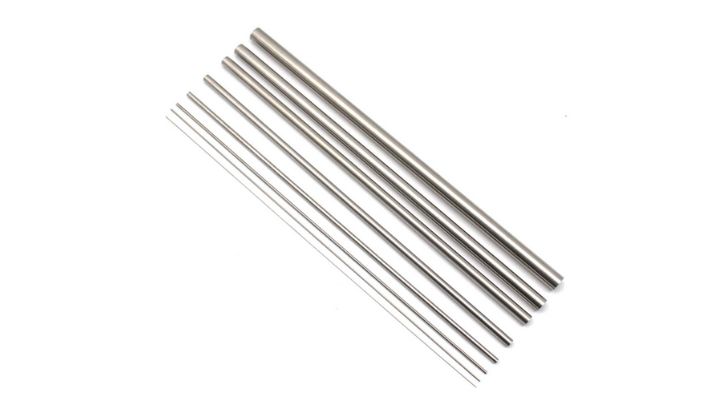
High Quality HPLC Column 316L, 316 Stainless Steel Tube Materials

Design New HPLC Columns 100% As Clients Request

Make HPLC Column Samples And Test Before Mass Products.
What
Clients Say
I am extremely impressed with the quality and consistency of uHPLCs' HPLC columns. They have greatly improved the efficiency and accuracy of our analysis, and their OEM service has allowed us to develop columns that perfectly meet our lab's specific needs.
Amanda LeeCEO 
I've been using the HPLC columns from uHPLCs for over a year, and I can honestly say they are the best I've ever used. The performance is consistently excellent, and I've never had any issues with them. I highly recommend them to anyone looking for high-quality HPLC columns.
Adam CheiseDesigner 
We have been using uHPLCs' HPLC columns for quality control of our pharmaceutical products and have found them reliable and efficient. The column lifetime is also longer than any other column that we have used before.
Floyd StallerCo-Founder 
I recently switched to uHPLCs' HPLC columns and have been extremely impressed with the results. The improved resolution and peak symmetry have been game changers for my research, and the customer service is top-notch.
Floyd StallerCo-Founder 
I've tried columns from several other companies, but uHPLCs' HPLC columns are by far the best in terms of quality and value. They have always delivered consistent, reproducible results, and the company's technical support has been invaluable.
Floyd StallerCo-Founder 
Previous
Next
Contact Salesman

High Quality HPLC Column 316L, 316 Stainless Steel Tube Materials

Design New HPLC Columns 100% As Clients Request

Make HPLC Column Samples And Test Before Mass Products.
HPLC Column FAQ
1.) Types of HPLC Column
High-Performance Liquid Chromatography (HPLC) is a powerful analytical technique used to separate, identify, and quantify components in a mixture. HPLC columns are a critical component of the HPLC system and play a significant role in the separation process. There are several types of HPLC columns, each designed for specific applications and analytes. Here are some common types of HPLC columns:
1. C18 Column (Reverse Phase):
C18 columns are a specific type of reverse-phase column that is widely used in HPLC.
The stationary phase of C18 columns is made of octadecylsilane (C18), which is a long hydrocarbon chain bonded to a silica surface.
These columns are nonpolar and are particularly effective for separating hydrophobic compounds.
C18 columns are commonly used in pharmaceutical, environmental, and biological applications to analyze drugs, lipids, and other nonpolar analytes.
2. Guard Column:
A guard column is a short, narrow-bore column placed before the analytical column in an HPLC system.
Its primary purpose is to protect the analytical column from contaminants and particulate matter that may be present in the sample or mobile phase.
Guard columns are typically filled with the same stationary phase material as the analytical column, allowing them to efficiently capture and retain impurities.
By extending the lifespan of the analytical column, guard columns help maintain the HPLC system’s performance and reduce the need for frequent column replacement.
3. Reverse Phase Columns (RP):
The most widely used type of HPLC column.
Stationary phase is nonpolar (hydrophobic) and the mobile phase is polar (aqueous with organic modifier).
Suitable for separating hydrophobic compounds like drugs, lipids, and nonpolar analytes.
4. Normal Phase Columns:
The stationary phase is polar (silica-based) and the mobile phase is nonpolar (organic solvent).
Useful for separating polar compounds such as small organic molecules, carbohydrates, and some natural products.
5. Ion-Exchange Columns:
Separate analytes based on their charge.
Stationary phase has charged functional groups (positively or negatively charged) and retains oppositely charged analytes.
Used for analyzing ionic compounds, amino acids, peptides, and proteins.
6. Size-Exclusion/Gel Filtration Columns:
Also known as gel permeation chromatography (GPC) or gel filtration chromatography (GFC).
Separate analytes based on their size.
Larger molecules elute first because they cannot penetrate the pores of the stationary phase, while smaller molecules are delayed as they enter the pores.
7. Affinity Columns:
Utilize specific interactions between analytes and immobilized ligands on the stationary phase.
Highly selective for target compounds, such as antibodies, enzymes, and biomolecules.
8. Chiral Columns:
Separate enantiomers (mirror-image isomers) of chiral compounds.
Contain a chiral stationary phase, which interacts differently with the enantiomers, leading to distinct retention times.
9. Hydrophilic Interaction Liquid Chromatography (HILIC) Columns:
Retain polar and hydrophilic compounds.
Stationary phase is polar, and the mobile phase is a mixture of water and organic solvent.
Useful for separating highly polar compounds, peptides, and glycoproteins.
10. Hybrid/Combination Columns:
Combine two or more separation mechanisms, such as reversed phase and ion-exchange.
Offer enhanced selectivity and versatility for complex samples.
Each type of HPLC column offers unique separation characteristics, making them suitable for different applications and analytes. The choice of column depends on the specific analytical requirements and the nature of the compounds being analyzed.

HPLC Column Dimensions All You Should Know
In High-Performance Liquid Chromatography (HPLC), column dimensions play a crucial role in the efficiency and performance of the separation process. Here are some essential HPLC column dimensions you should know:
HPLC column dimensions are an important consideration when selecting a column for your HPLC analysis. The dimensions of the column will affect the efficiency, sensitivity, and speed of your analysis.
Inner Diameter (ID)
The inner diameter (ID) of the column is the diameter of the inside of the column. The most common IDs for HPLC columns are 4.6 mm, 3.0 mm, and 2.1 mm. Smaller ID columns have higher efficiency and sensitivity, but they also require lower flow rates.
Column Length
The length of the column is the distance from the inlet to the outlet of the column. Longer columns
have higher efficiency and can resolve more complex mixtures. However, longer columns also require longer run times.
| Column Length (mm) | Typical Pore Size of Column Frit (µm) |
|---|---|
| 30mm | 2 |
| 50mm | 2 |
| 100mm | 2 |
| 150mm | 2 or 10 |
| 250mm | 2 or 10 |
| 300mm | 2 or 10 |
HPLC Column Length
Particle Size
The particle size is the diameter of the stationary phase particles in the column. Smaller particle sizes have higher efficiency
and can resolve more complex mixtures. However, smaller particle sizes also require higher pressure to operate.
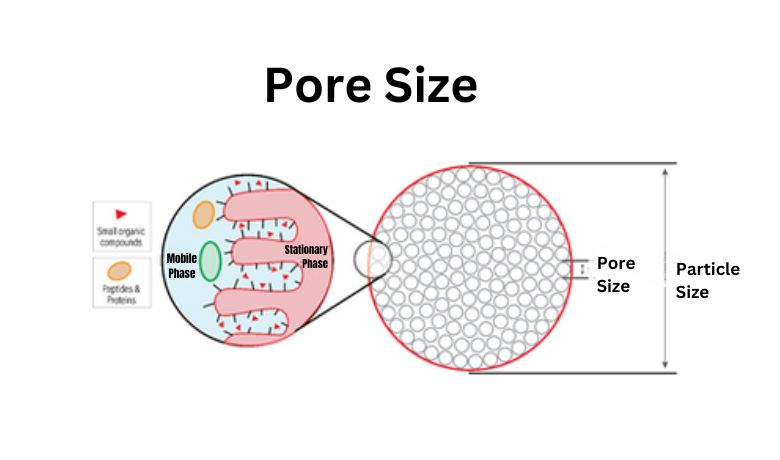
HPLC Column Particle Size
Pore Size
The pore size is the diameter of the pores in the stationary phase particles.
Larger pore sizes allow larger molecules to penetrate the pores and access more
of the stationary phase surface. This can improve resolution for large molecules.
Column Selection
The best way to select an HPLC column is to consider the specific requirements of your analysis. If you need high efficiency and sensitivity,
a smaller ID column with smaller particle size may be a good choice. If you need to resolve a complex mixture, a longer column may be a better choice.
Here is a table summarizing the effects of column dimensions on HPLC analysis:
| Dimension | Effect on Analysis |
|---|---|
| Inner diameter (ID) | Smaller ID columns have higher efficiency and sensitivity, but they also require lower flow rates. |
| Column length | Longer columns have higher efficiency and can resolve more complex mixtures. However, longer columns also require longer run times. |
| Particle size | Smaller particle sizes have higher efficiency and can resolve more complex mixtures. However, smaller particle sizes also require higher pressure to operate. |
| Pore size | Larger pore sizes allow larger molecules to penetrate the pores and access more of the stationary phase surface. This can improve resolution for large molecules. |
It’s important to select the appropriate column dimensions based on the specific separation requirements, the nature of the analytes, and the available HPLC system capabilities.
Factors like column length, ID, particle size, and pore size directly impact resolution, sensitivity, and analysis time, so careful consideration is essential
when choosing an HPLC column for a particular application.
HPLC Column Particle Size You Interested to Know
In High-Performance Liquid Chromatography (HPLC), the particle size of the stationary phase material in the column is a crucial parameter that significantly influences the separation performance. You Also need to Care and Know the Size Details. Here are some important points about HPLC column particle size:
Particle Size Range:
- HPLC columns are available with various particle sizes, commonly ranging from 1.5 μm to 10 μm.
- The most common particle sizes used in modern HPLC are 3 μm and 5 μm.
Effect on Efficiency:
- Smaller particle sizes offer higher efficiency and better peak resolution.
- With smaller particles, there is a larger surface area available for interactions between the analytes and the stationary phase, leading to improved separation.
Effect on Pressure:
- Smaller particle sizes result in increased backpressure in the HPLC system.
- The backpressure generated by columns with smaller particles may require specialized high-pressure HPLC instruments.
Advancements in Particle Technology:
- Over the years, advancements in particle technology have allowed the development of sub-2 μm particles for ultra-high-performance liquid chromatography (UHPLC).
- UHPLC columns with sub-2 μm particles offer exceptionally high resolution and faster analysis times.
Compatibility with HPLC Instruments:
- The particle size should be compatible with the HPLC instrument being used.
- Older HPLC systems may not be able to handle columns with very small particle sizes due to limitations in backpressure capabilities.
Analyte Size Considerations:
- For large biomolecules or macromolecules, such as proteins, peptides, and nucleic acids, larger particle sizes (e.g., 5 μm) are often preferred to minimize the risk of pore diffusion limitations.
Column Efficiency and Peak Symmetry:
- Smaller particles contribute to better column efficiency, resulting in narrower and sharper peaks with improved peak symmetry.
Column Maintenance:
- Columns with smaller particle sizes require more frequent maintenance, such as regular flushing and solvent changes, to prevent clogging and maintain performance.
When selecting an HPLC column, the particle size is a critical factor to consider, as it directly impacts the chromatographic performance and overall analysis time. For routine analytical HPLC, 3 μm and 5 μm particles are widely used, while sub-2 μm particles find application in UHPLC for high-resolution and fast separations.
How HPLC Column Volume Calculator ?
Do You Know How to Calculator HPLC Column Volume ? Here We Give Some Idea, Hope It will be Helpful for You to Know Details.
Calculating the HPLC column volume is essential for determining the amount of solvent required for column equilibration and for estimating the elution times of compounds during chromatographic runs. The HPLC column volume can be calculated using the following formula:
Column Volume (V) = π * (Column Internal Diameter/2)^2 * Column Length
Here’s how to use the formula:
Gather Information:
- You will need to know the internal diameter (ID) of the HPLC column and its length. Both are typically provided by the column manufacturer or can be measured directly.
Convert Units (if necessary):
- Ensure that the units for both the internal diameter and length are consistent (e.g., millimeters or centimeters).
- If the dimensions are given in different units (e.g., inches or centimeters), convert them to the same unit before proceeding with the calculation.
Apply the Formula:
- Divide the internal diameter by 2 to get the radius (r).
- Square the radius (r^2).
- Multiply the squared radius by π (pi, approximately 3.14159).
- Multiply the result by the column length to obtain the column volume.
Here’s a step-by-step example using the formula:
Suppose we have an HPLC column with an internal diameter of 4.6 mm and a length of 150 mm.
Step 1: Calculate the radius (r):
- r = Internal Diameter / 2 = 4.6 mm / 2 = 2.3 mm
Step 2: Calculate the squared radius (r^2):
- r^2 = (2.3 mm)^2 ≈ 5.29 mm^2
Step 3: Calculate the column volume (V):
- V = π * r^2 * Column Length = 3.14159 * 5.29 mm^2 * 150 mm ≈ 1183.13 mm^3
Step 4: Convert the column volume to a more convenient unit (optional):
- In this example, 1 cm^3 (cubic centimeter) is equivalent to 1000 mm^3, so the column volume is approximately 1.18 cm^3.
Now you have calculated the HPLC column volume, which is useful for various aspects of HPLC method development and optimization.
How to Choose Right HPLC Column Selection ?
In Order to Choose Right HPLC Column for Your HPLC System or Project, You Should Care Some Factors As Following:
Choosing the right HPLC column is crucial for obtaining accurate and reliable chromatographic results. The selection process involves considering various factors based on the specific analytical requirements. Here are some essential steps to guide you in choosing the right HPLC column:
Analyte Characteristics:
- Consider the nature of the compounds you want to analyze. Are they polar or nonpolar? Ionic or neutral? Acidic or basic?
- For nonpolar compounds, a reverse-phase column like C18 may be suitable, while polar compounds may require a normal phase or HILIC column.
- For charged analytes, an ion-exchange column might be appropriate.
Sample Matrix:
- Evaluate the sample matrix, including potential contaminants or interfering compounds.
- Ensure the column can handle the sample matrix without clogging or irreversible adsorption.
Separation Requirements:
- Determine the resolution and separation efficiency needed for your analysis.
- Smaller particle sizes (sub-2 μm) or specialized columns may be necessary for high-resolution applications.
Column Length and Diameter:
- The column length affects the separation time, while the internal diameter (ID) influences sensitivity and flow rate.
- Longer columns offer higher resolution but might require longer analysis times.
- Smaller ID columns provide higher sensitivity but may generate higher backpressure.
Particle Size:
- Consider the particle size of the stationary phase.
- Smaller particle sizes offer higher efficiency and resolution but might require specialized equipment to handle the increased backpressure.
Column Chemistry and Stationary Phase:
- Choose the appropriate stationary phase chemistry based on analyte interactions.
- C18 columns are widely used for nonpolar compounds, while alternative phases cater to specific applications.
Column Compatibility:
- Ensure the chosen column is compatible with your HPLC system in terms of pressure and hardware requirements.
Sample Load and Throughput:
- If you need to analyze a large number of samples, consider a column with high throughput capabilities.
Budget Considerations:
- Take into account the cost of the column and its longevity.
- Balancing performance with cost is crucial for routine analyses.
Column Reputation and Support:
- Choose columns from reputable manufacturers with good technical support and resources.
Application Notes and Recommendations:
- Check if the column manufacturer provides application notes or recommendations for specific types of analyses.
Remember that column selection may involve some trial and error, particularly for complex separations. It is often beneficial to consult with experienced chromatographers, seek advice from column manufacturers, and conduct small-scale method development experiments to ensure optimal column selection for your specific HPLC analysis.
Analytical column in HPLC or Preparative HPLC Column, How to Choose ?
Think Some Newbie Don’t Know How to distinguish Between Analytical and Preparative Columns, Here we List some difference Between Analytical and Preparative Columns, Hope it will be helpful.
- Objective: Determine the main goal of your chromatographic analysis. If you need to separate, identify, and quantify compounds in a sample, an analytical column is appropriate. If your goal is to purify and collect larger amounts of specific compounds, a preparative column is the right choice.
- Sample Size: Consider the available sample size for analysis. Analytical columns are suitable for smaller samples, while preparative columns are necessary for larger quantities.
- Throughput: Assess the required throughput and purification capacity. Analytical columns are efficient for high-resolution analyses, while preparative columns allow for faster purification of larger quantities.
- Budget: Analytical columns are generally more budget-friendly, while preparative columns involve higher costs due to their larger size and specialized nature.
Ultimately, the decision comes down to the specific needs of your application. For routine analytical work and high-resolution separation, an analytical column is appropriate, while a preparative column is essential when purification and collection of larger quantities of target compounds are the primary objectives.
c18 HPLC Column, C30 HPLC Column,c4 Column HPLC, c8 Column HPLC How to choose ?
Choosing between C18, C30, C4, and C8 HPLC columns involves understanding their different selectivity and interactions with analytes. Each type of column offers unique separation characteristics, making them suitable for specific applications. Here’s how to choose among them:
C18 HPLC Column:
- Selectivity: C18 columns are the most widely used and versatile HPLC columns.
- Chemistry: The stationary phase is made of octadecylsilane (C18), a long hydrocarbon chain.
- Application: C18 columns are best for separating nonpolar and hydrophobic compounds.
- Typical Uses: Analyzing drugs, lipids, natural products, and other hydrophobic analytes.
C30 HPLC Column:
- Selectivity: C30 columns provide extended hydrophobicity compared to C18 columns.
- Chemistry: The stationary phase consists of a longer hydrocarbon chain (30 carbons) than C18.
- Application: C30 columns are useful for separating highly hydrophobic compounds.
- Typical Uses: Analyzing complex natural products, lipids, and compounds with multiple hydrophobic moieties.
C4 HPLC Column:
- Selectivity: C4 columns have intermediate hydrophobicity between C18 and C8.
- Chemistry: The stationary phase is made of butyl groups (C4).
- Application: C4 columns are suitable for moderately hydrophobic compounds.
- Typical Uses: Analyzing small polar compounds, peptides, and moderately hydrophobic analytes.
C8 HPLC Column:
- Selectivity: C8 columns have lower hydrophobicity compared to C18.
- Chemistry: The stationary phase consists of octyl groups (C8).
- Application: C8 columns are used for separating polar and moderately hydrophobic compounds.
- Typical Uses: Analyzing peptides, small polar compounds, and moderately hydrophobic analytes.
Choosing the Right Column:
- Analyte Hydrophobicity: If your analytes are highly hydrophobic, consider using a C30 or C18 column. For moderately hydrophobic analytes, C18 or C4 may be suitable.
- Sample Complexity: For complex mixtures with a wide range of compounds, C18 columns are a good starting point due to their versatility.
- Analyte Size: Larger molecules may require C18 or C30 columns with longer hydrophobic chains to accommodate their interactions.
- Method Development: If you have previous experience with specific columns and achieved good separations, it may be beneficial to stick with those columns.
In summary, C18 HPLC columns are a reliable choice for a wide range of applications, while C30, C4, and C8 columns offer specialized selectivity for particular analytes. Consider the hydrophobicity of your analytes and the complexity of your samples to make an informed decision. If possible, perform small-scale method development experiments using different columns to assess which one provides the best separation for your specific application.
What is Column Efficiency in HPLC ?
Column efficiency, also known as plate count or theoretical plates, is a critical parameter in High-Performance Liquid Chromatography (HPLC) that quantifies the separation capability of an HPLC column. It provides a measure of how well a column can separate individual components in a sample as they pass through the stationary phase.
In HPLC, analytes are separated based on their interactions with the stationary phase and the mobile phase. The more interactions an analyte undergoes with the stationary phase during its elution, the longer it takes to pass through the column. Efficient columns can provide sharper and narrower peaks, resulting in better resolution and sensitivity.
Column Efficiency is Quantified in Terms of Theoretical Plates:
The theoretical plate is a concept borrowed from distillation, where it represents a hypothetical equilibrium stage in the separation process. In HPLC, it refers to a hypothetical section of the column where an analyte gets evenly distributed between the mobile phase and the stationary phase. Higher theoretical plates indicate better separation efficiency.
Factors Affecting Column Efficiency:
Several factors influence column efficiency in HPLC:
Particle Size: Columns with smaller particle sizes generally offer higher efficiency because they provide a larger surface area for interactions.
Column Length: Longer columns tend to have more theoretical plates and better efficiency. However, longer columns may require longer analysis times.
Column Diameter: Smaller diameter columns offer higher efficiency due to reduced diffusion distances and a narrower band spreading.
Mobile Phase Flow Rate: Lower flow rates can increase column efficiency, but very low flow rates may increase the analysis time significantly.
Temperature: The column efficiency can be affected by temperature, with higher temperatures leading to reduced efficiency in some cases.
Assessing Column Efficiency:
Column efficiency is often expressed as the number of theoretical plates (N) or the plate count per unit length of the column (N/m):
N = 16 * (tR / w)^2
Where:
- N is the number of theoretical plates.
- tR is the retention time of the peak.
- w is the peak width at its base.
In practice, chromatographers aim to achieve a higher number of theoretical plates for better peak resolution and sensitivity. Efficient columns provide well-defined and sharp peaks, leading to accurate quantification and identification of analytes in complex mixtures. However, it’s essential to balance column efficiency with the desired analysis time and instrument capabilities to achieve optimal chromatographic performance.
How HPLC Column Storage ?
Proper storage of High-Performance Liquid Chromatography (HPLC) columns is essential to maintain their performance and longevity. The following guidelines can help you store your HPLC columns correctly:
Cleanliness: Before storage, ensure that the column is clean and free from any residual analytes or contaminants. If necessary, perform a thorough cleaning according to the manufacturer’s instructions.
Mobile Phase: If the column will be stored for an extended period, remove the mobile phase from the system and the column. Empty the solvent reservoir and thoroughly flush the column with an appropriate solvent to remove any remaining mobile phase.
Protection from Contaminants: Install a column end cap or column stop on both ends to protect the column from airborne contaminants, dust, and moisture. This prevents particles from entering the column during storage.
Storage Conditions: Store the column in a clean and dry environment away from direct sunlight and extreme temperatures. Room temperature is generally suitable for short-term storage, but for long-term storage, consider refrigeration at a stable temperature between 4°C to 10°C.
Column Orientation: Store the column in an upright position to prevent settling of packing material and to ensure uniform distribution when the column is used again.
Transportation: If the column needs to be transported, ensure it is securely packed in a protective case or box to prevent damage during transit.
Avoid Aggressive Solvents: If the column is not in use for an extended period, avoid storing it in aggressive solvents, such as strong acids or bases, as they may deteriorate the stationary phase over time.
Follow Manufacturer’s Recommendations: Always follow the storage recommendations provided by the column manufacturer, as different types of columns may have specific storage requirements.
Column Care: Regularly inspect the column for any signs of damage or leakage. If any issues are observed, contact the manufacturer or technical support for guidance.
Record Keeping: Keep a record of the column usage, storage duration, and any maintenance or cleaning performed, as this information can help track the column’s performance and aid in troubleshooting potential issues.
Proper storage practices help preserve the performance and integrity of HPLC columns, ensuring reliable and consistent results during analyses. Before putting a stored column back into operation, it is advisable to recondition it by flushing with the appropriate solvent and following the manufacturer’s recommended procedures for equilibration.
Some Applications of HPLC Column
High-Performance Liquid Chromatography (HPLC) is a versatile analytical technique with a wide range of applications in various industries. The choice of HPLC column depends on the specific analytes and separation requirements of each application. Here are some common applications and the recommended HPLC column types for each:
Pharmaceutical Analysis:
- Application: Analyzing drugs, active pharmaceutical ingredients (APIs), impurities, and formulation components.
- Recommended HPLC Column: C18 column (Reverse Phase). C18 is the most commonly used column for pharmaceutical analysis due to its broad applicability for separating a wide range of compounds.
Environmental Analysis:
- Application: Monitoring environmental pollutants, pesticides, herbicides, and other contaminants in water, soil, and air samples.
- Recommended HPLC Column: C18 column (Reverse Phase) or HILIC column. The choice depends on the hydrophobicity/polarity of the target compounds. HILIC columns are suitable for polar analytes.
Food and Beverage Analysis:
- Application: Determining food additives, preservatives, vitamins, and other components in food and beverage samples.
- Recommended HPLC Column: C18 column (Reverse Phase). C18 is widely used in food analysis due to its ability to separate a variety of food-related compounds.
Biochemical Analysis and Proteomics:
- Application: Identifying and quantifying biomolecules, such as peptides, proteins, amino acids, nucleic acids, and metabolites.
- Recommended HPLC Column: C18 column (Reverse Phase) or C4 column. C18 is commonly used for peptides and proteins, while C4 is preferred for small polar compounds.
Clinical and Forensic Toxicology:
- Application: Detecting and quantifying drugs, metabolites, and toxins in biological samples for medical and forensic purposes.
- Recommended HPLC Column: C18 column (Reverse Phase). C18 is suitable for analyzing a wide range of drugs and metabolites.
Natural Product Analysis:
- Application: Characterizing and identifying compounds from plant extracts and natural products.
- Recommended HPLC Column: Depending on the complexity of the sample, C18 column (Reverse Phase) or C30 column. C30 provides additional hydrophobic interactions for complex mixtures.
Chiral Separations:
- Application: Separating enantiomers (optical isomers) of chiral compounds.
- Recommended HPLC Column: Chiral column. Chiral columns have immobilized chiral selectors that differentiate enantiomers based on their stereoisomeric configurations.
Pharmaceutical Preparative Purification:
- Application: Isolating and purifying larger quantities of drugs and intermediates for drug development and manufacturing.
- Recommended HPLC Column: Preparative C18 column (Reverse Phase) or other preparative columns with larger dimensions for increased loading capacity.
For each application, it is essential to consider the sample characteristics, the nature of the analytes, and the separation requirements to choose the most suitable HPLC column. Method development and optimization may also be necessary to achieve the desired results.
Why Buy HPLC Column From uHPLCs
When you choose HPLC Columns, You should care some factors, Here we list some factors you should care, why choose uHPLCs to buy HPLC Columns. Hope it will be helpful for your choose.
Quality Assurance: Buy HPLC Columns from Reputable suppliers or manufacturers often adhere to strict quality control standards. Buying from such sources can ensure that you receive high-quality, reliable, and consistent products.
Wide Range of Selection: Established suppliers typically offer a wide range of HPLC columns with various chemistries, particle sizes, and dimensions. This allows you to find the most suitable column for your specific analytical needs.
Technical Support: Reputable suppliers often provide excellent technical support to help you select the right column, troubleshoot issues, and optimize your chromatographic methods.
Application Expertise: Suppliers with expertise in different industries or applications (pharmaceuticals, environmental analysis, biochemistry, etc.) can offer tailored column recommendations based on your specific field of interest.
Batch-to-Batch Consistency: Buying from a trusted source ensures consistent quality across different batches, leading to reproducible results and fewer method adjustments.
Compatibility with Instruments: Established suppliers ensure their HPLC columns are compatible with a wide range of HPLC instruments and systems, reducing the risk of compatibility issues.
Warranty and Returns: Reputable suppliers often offer warranties and return policies, giving you peace of mind in case of any unexpected issues.
Value for Money: While quality products may come at a higher price, the investment in high-quality HPLC columns often translates into better performance, increased efficiency, and reduced downtime, ultimately offering value for money.
Before purchasing HPLC columns or any other scientific equipment, it’s essential to do thorough research and read reviews or testimonials from other customers. Additionally, consider factors such as the supplier’s reputation, customer service, and overall track record in the industry. Choose a supplier that aligns with your specific analytical needs and offers the support and expertise required for successful chromatographic analysis.
Frequently Asked Questions
As Follow is Some Frequently Questions People Asked
An HPLC (High-performance liquid chromatography) column is a piece of laboratory equipment used to separate and analyze a mixture of compounds. It is a key component of an HPLC system and is made up of a long tube packed with a stationary phase, which is used to separate the components of a sample as they are passed through the column.
What are the different types of HPLC columns? Several HPLC columns include reversed-phase, normal-phase, ion exchange, size-exclusion, and chiral columns. Each column type uses a different stationary phase and works best for different compounds and applications.
An HPLC column uses the differences in the physical and chemical properties of the compounds in a sample to separate them as they pass through the column. The sample is injected into the column and is carried through by a mobile phase, which can be a liquid or a gas. As the sample passes through the column, the different compounds are separated based on their interactions with the stationary phase.
The choice of HPLC column will depend on the type of compounds you work with and the separation conditions. Factors to consider include the polarity of the stationary phase, the particle size, and the column dimension. It would help to consider the cost and the manufacturer’s reputation.
Typical dimensions for HPLC columns are 4.6mm, 3.0mm, and 2.1mm. Other dimensions available are 2.1mm, 1.7mm, and 1.0mm. Some columns can have dimensions as small as 0.3mm for special applications.
How do I properly store my HPLC column? HPLC columns should be stored in a cool, dry place, with the end caps in place to protect the stationary phase from contamination. Avoid exposing the column to extreme temperatures or changes in humidity, as this can affect the performance of the column.
The lifespan of an HPLC column will depend on the type of stationary phase and the conditions under which it is used. Some columns can be used for a few hundred injections, while others can be used for several thousand. If you plan to reuse your column, follow the manufacturer’s recommendations for cleaning and storage.
The particle size of an HPLC column is typically between 2 and 10 microns.
Following the manufacturer’s instructions for cleaning an HPLC column is important. Generally, cleaning a column by running a compatible solvent after use and before storage would be best.
Packed columns are filled with a stationary phase, while capillary columns are typically made of fused silica or metal tubing. Packed columns are often used in traditional HPLC, while capillary columns are used in ultra-high-performance liquid chromatography (UHPLC).
To extend an HPLC column’s life, it is important to protect it from excessive temperature, humidity, and pressure changes. You should also avoid using harsh cleaning agents and overloading the column with the sample.
Need Help ?
Contact uHPLCs Today for Any Questions for HPLC / UHPLC
+(86) 0755-28502380
sales@uhplcs.com
Contact Us
Recent Posts
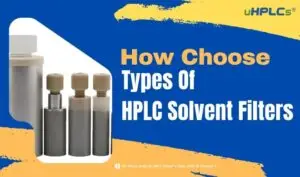
Types of HPLC Solvent Filters and How to Choose
Introduction In High Performance Liquid Chromatography (HPLC), the purity of solvents is paramount for achieving
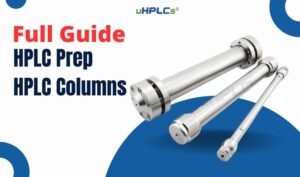
HPLC Prep HPLC Columns Full Guide
High-performance liquid chromatography (HPLC) is a workhorse technique in labs worldwide, separating complex mixtures into
Hotsale HPLC Products
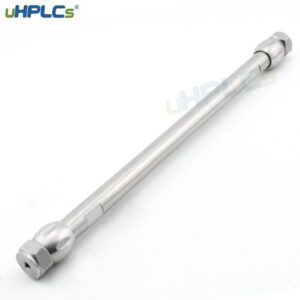
c18 hplc column 4.6 and 250mm
Previous slide Next slide USHD C18-Pro 5 µm 4.6 x 250 mm Unlock unparalleled robustness with the USHD C18-Pro HPLC column, where superior chemical resistance

50mm Empty HPLC Columns
Previous slide Next slide 50mm Empty HPLC Columns Wholesale and OEM Manufacturer Short Description: UHPLC Empty Column Hardware (Each column blank kit) includes a precision-bore

20mm Empty HPLC Columns
Previous slide Next slide 20mm Empty HPLC Columns 316L Stainless Steel Short Description: UHPLC Empty Column Hardware (Each column blank kit) includes a precision-bore polished
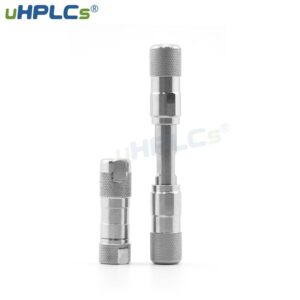
10mm Empty HPLC Columns
Previous slide Next slide 10mm Empty HPLC Columns 316L Stainless Steel Short Description: UHPLC Empty Column Hardware (Each column blank kit) includes a precision-bore polished
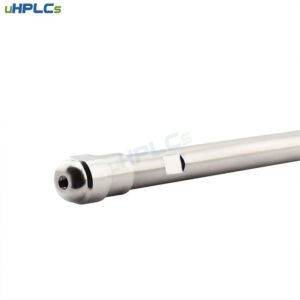
4.6mm Empty HPLC Columns 316L Stainless Steel
Previous slide Next slide 4.6mm Empty HPLC Columns 316L Stainless Steel Short Description: UHPLC Empty Column Hardware (Each column blank kit) includes a precision-bore polished

7.8mm Semi-prepared Empty HPLC Columns
Previous slide Next slide 7.8mm Semi-prepared Empty HPLC Columns HPLC Column Assembly, Empty, 150 mm/250/300 L x 7.8 mm ID x 1/4″ OD Short Description:
